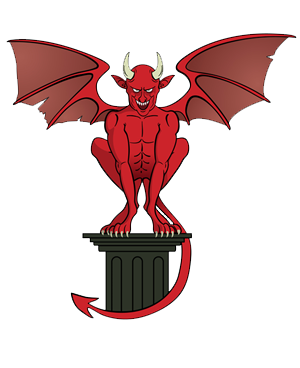For the Ground Oral Exam you’ll be expected to have a working knowledge of the following subjects…
Pilot Maintenance
- Maintenance of aircraft airworthiness documents and required servicing schedules.
- Maintenance of records in aircraft log book.
- Servicing and repair procedures permitted by pilot and subsequent inspection procedures.
Aircraft Limitations
You must demonstrate knowledge of :-
1) Loading.
- Maximum take off weight
- Empty weight
- Maximum cockpit loading with full fuel load
- Minimum cockpit loading
- Provision for fitting of ballast
- Provision for carrying of ballast
2) Operating Speeds.
- Vne
- Vno
- Vra
- Vfe
- Vs (with and without flap)
- Vs (wings level and wings banked)
- Limitations of aerodynamic loading
- Handling limitations with maximum fuel and payload
3) Maximum limits of angles of aircraft in relation to horizon in:
- Pitch
- Roll
4) Flight conditions for which the aircraft is certified.
- Day / Night
- VFR / IFR
- Icing
5) Weight and performance – knowledge of take off distance and landing distance (given specific conditions of weight, temperature and altitude in the Flight Manual or equivalent document).
6) Knowledge of range and endurance of aircraft.
Flying Controls
1) Understanding of type and operation of the following systems.
- Rudder
- Variable incidence mainplane
- Aileron
- Spoiler
- Elevator (or stabilator)
- Weightshift (billow shift mechanism)
2) Any inter-connection of control system, e.g. rudder / aileron, weight shift / elevator.
3) Understanding of type and operation if trim systems.
- Trim
- Balance
- Anti-balance
4) Understanding of the operation and indications of the flap or airbrake system.
- Electric
- Mechanical
- Range of control movement
- Asymmetry – indication and protection
5) Stall warning system type and indications.
- Mechanical
- Aerodynamic
- Electrical
6) Understanding of type and operation of nose wheel steering, including any inter-connection of nose wheel and rudder.
Landing Gear
1) Understanding of type of shock absorbers.
- Leaf spring
- Bungee
- Oleo pneumatic
2) Recognition of normal ground attitude of aircraft.
3) Understanding of type and operation of brakes
- Mechanical
- Hydraulic
- Disc
- Drum
4) Knowledge of defects (particularly unacceptable) in tyres
- Normal pressure
5) Retractable.
- Knowledge of type and understanding of operation of system
- Knowledge of normal operation and emergency procedures
Electrical System
1) Knowledge of system voltage.
2) Types of generators and alternators.
3) Understanding of system indications:
- Voltmeters
- Ammeter
- Warning lights
4) Knowledge of location of batteries.
5) Approximate length of time power is available from fully charged batteries.
6) Knowledge of fuses/circuit breakers.
- Location
- Operation
Heating / Ventilation System
1) Knowledge of type and operation of heating system.
- Normal operation
- Controls
2) Knowledge of potential dangers:
- Recognition of carbon monoxide
- Precautions to be taken if carbon monoxide is suspected
3) Knowledge of action to be taken in the event of a cabin fire.
Flight Instruments
1) Instruments operated by electrical system.
2) Instruments operated by pitot/static system
Position of
- Pitot head
- Static vents
- Drains
3) Alternate static
- Purpose of
- Use of
Engine
1) Engine
- Type
- Reduction drive type
2) Carburettor
- Type
- Permitted adjustments
3) Understanding of ignition system and component parts.
4) Understanding of type and importance of engine cooling system.
5) Knowledge of action in event of engine failure.
Engine Indications
1) Detailed knowledge of RPM:
- Maximum normal operating (red line limit)
- Overspeed
2) Temperature – CHT/EGT
- Normal
- Maximum
3) Temperature – water
- Normal
- Maximum
4) Temperature – oil
- Minimum
- Maximum
5) Pressure – oil
- Minimum
- Maximum
6) Purpose of correct use of throttle control and significance of
- Maximum drop
- Difference between Magneto’s
- Dead cut check
Engine Controls
1) Understanding of correct use of throttle control
2) Understanding and correct use of mixture control (use of EGT gauge)
- Power and altitude limitations on leaning
- Leaning for maximum power
- Leaning for maximum economy
3) Understanding of carburetor, heat system and of icing
- Type of system
- Indication of icing
- Correct use of carburetor heat system
4) Understanding of use of choke or priming control
5) Understanding of magneto’s or ignition control
Fuel System
1) Knowledge of grade of fuel
2) Number and useable capacity of tank(s)
3) Location/importance of:
- Drains
- Vents
4) Refuelling
- Location of fillers
- Special precautions
5) Understanding of type and operation of fuel system
- Gravity
- Pumps – Electrical
- Engine driven/pressure driven
6) Airborne fuel management – any tank priority
7) Use of electrical pumps
8) Knowledge of quantity indication
- Mechanical
- Electrical
- Effect of aircraft attitude
9) Methods and precautions of priming
Oil System
1) Knowledge of oil system
- Grade of oil
- Maximum and minimum quantities
- Location of tank (or sump)
- Correct fuel to oil ratio
Propellers
1) Understanding of importance of cleanliness/condition of blades (nicks, cuts, delamination etc.)
2) Understanding of variable pitch control
- Mechanism
- Use
3) Understanding of ground adjustable pitch
- Mechanism
- Use
